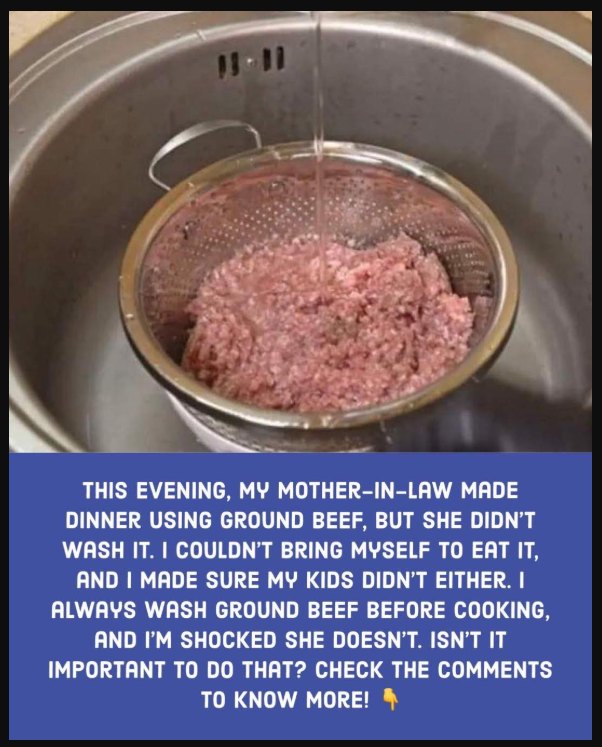🔥 Cooking Kills the Bacteria
The good news? Heat does what water can’t. Properly cooking ground beef to an internal temperature of 160°F (71°C)will kill any harmful bacteria present.
Instead of rinsing, focus on:
-
Using a food thermometer
-
Cooking until there’s no pink inside
-
Making sure juices run clear
That’s the safest and most effective way to handle ground beef.
🧼 But What About the Slimy Texture?
Some people wash ground beef because it feels “slimy” or “sticky” out of the package. This is due to natural proteinsand moisture—not dirt or spoilage.
To remove excess liquid:
-
Pat the beef dry with paper towels (only if needed)
-
Drain grease after cooking for a leaner result
-
Choose higher-quality ground beef with less water content
💡 Pro Tips for Safe Handling (No Washing Needed)
-
Wash your hands before and after handling raw meat
-
Use separate cutting boards for meat and produce
-
Clean your sink and surfaces after prepping meat
-
Never thaw meat on the counter—use the fridge or cold water bath instead
-
Cook immediately after prepping to avoid bacterial growth
🧪 Bonus Myth Busted: Vinegar or Lemon Won’t Help
Some people try rinsing ground beef with vinegar or lemon juice, hoping to “sanitize” it. While these acidic liquids may slightly reduce bacteria on the surface, they do not penetrate the meat, and they don’t eliminate the need to cook it thoroughly.
🧾 Bottom Line
No—don’t wash ground beef before cooking. It won’t make your food safer or cleaner. In fact, it can increase your risk of foodborne illness due to cross-contamination in your kitchen.
Instead, focus on proper storage, handling, and cooking techniques. If you’re aiming for cleaner or leaner meals, choose lean cuts, drain fat after cooking, or even mix with veggies or grains.
Safe, simple, and no sink splashing required.

